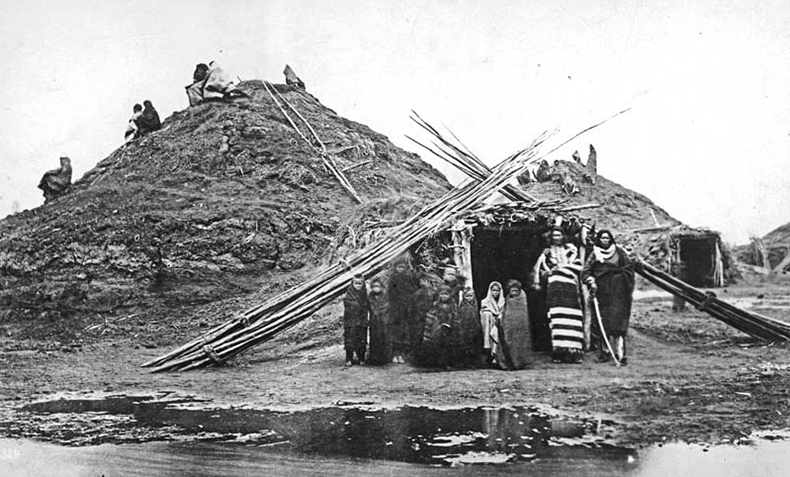The story of the land we call Wilderness Park must begin with, at the least, a few words about the Pawnee and Otoe/Missouria. This telling will in no way encompass the realities of life living with the salt creek watershed or give a correct scale of the historical importance of these communities. Imagine talking about football, and just focusing on the last 20 yards. This has been a failing of the science of history since its beginning. I point to this mainly as an attempt to ask the professionals and society to do better and apologize for my own shortcomings.
It’s possible the Pawnee lived in this area for 700 years before settlers began claiming land in the mid-1800s. They lived in earth lodges dug slightly in the ground with wooden frames covered with sod in a quasi-igloo shape. They cultivated corn, beans, and squash in lowland valleys where the soil was moist. Multiple generations and families lived in earth lodges at the same time and their cosmology was centered around the stars, animals, and crops. The seasons were marked by the ebb and flow of staying near villages along waterways during planting and harvest then expanding west, living in tipis, for bison hunting in the summer and winter. They lived very communally. Being a gossip was looked down upon and hard work was praised. Individuals would follow their interests in guilds centered around the group’s topic of interest. The winter months would bring the community together for multi-night telling of stories.
What’s most interesting to me, was their ability to live in balance with the land we call Nebraska. In the early 1700s, the Pawnee were more than 60,000 people living sustainably. Through settlement and colonization, disease and starvation, their population declined to 2,440 in 1873. The toll of westward expansion is hard to bear and the loss of such an amazing people and lifeway from the salt creek watershed leaves us as a society less wise and diverse.
Much of my knowledge of the Pawnee comes from the book “The Lost Universe” by Gene Weltfish and “An Unspeakable Sadness” by David J. Wishart. I highly suggest taking some time to learn about the cultures who lived here. It is a sobering reminder of the cost of Manifest Destiny and instructive on how we could live in balance again.
I must admit I know more about the Pawnee than I do the Otoe/Missouria. To honor them best, it’s time I take my own advice and find a book and do some research.
Photo courtesy: Kansas Historical Society



